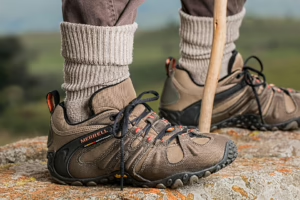Chronic Muscle Spasms: When It’s More Than Just Discomfort
Muscle spasms are involuntary contractions of one or more muscles, often resulting in a sudden onset of pain and discomfort. While many individuals may experience occasional muscle spasms from time to time—often due to overuse, fatigue, or dehydration—chronic muscle spasms can signify a more serious underlying health condition. Understanding the causes, symptoms, and treatments of chronic muscle spasms is crucial for effective management and improved quality of life.
Understanding Muscle Spasms
Muscle spasms are classified into two primary categories: acute and chronic. Acute muscle spasms are temporary and typically resolve within a few minutes to a few days. In contrast, chronic muscle spasms persist over extended periods—often for weeks, months, or even years. Chronic muscle spasms can significantly impact quality of life and may often be linked to underlying medical conditions [1].
Causes of Chronic Muscle Spasms
Chronic muscle spasms can arise from a variety of causes, ranging from nerve compression to chronic medical conditions. Understanding these causes is essential for effective treatment.
-
Nerve Compression: Conditions such as herniated discs or spinal stenosis can compress nerves, leading to muscle spasms. When nerves are irritated or compressed, they can send abnormal signals to the muscles, resulting in involuntary contractions [2].
-
Dehydration and Electrolyte Imbalance: Muscle cramps are common in individuals who are dehydrated or have imbalances in electrolytes such as potassium, sodium, calcium, or magnesium. These minerals are vital for normal muscle function, and deficiencies can lead to spasms [3].
-
Chronic Medical Conditions: Conditions such as multiple sclerosis, amyotrophic lateral sclerosis (ALS), and Parkinson’s disease can lead to chronic muscle spasms. The spasms associated with these diseases are often a result of nerve dysfunction or muscle weakness [4].
-
Poor Circulation: Conditions that reduce blood flow to the muscles, such as peripheral artery disease (PAD), can lead to cramping and spasms. When muscles do not receive enough oxygen, they may respond with cramps [5].
-
Medication Side Effects: Some medications, including diuretics and statins, can cause muscle cramps as a side effect. If you suspect that your medication is contributing to muscle spasms, consult your healthcare provider [6].
- Other Factors: Stress, anxiety, and fatigue can also contribute to muscle spasms. Psychological factors may lead to increased muscle tension, making spasms more likely [7].
Symptoms of Chronic Muscle Spasms
Chronic muscle spasms can manifest in different ways depending on the affected muscle group. Common symptoms include:
- Involuntary Contractions: These contractions can range from mild twitching to severe cramps, often causing significant discomfort.
- Persistent Pain: Particularly after prolonged activity, individuals may experience lingering muscle soreness.
- Stiffness: Affected muscles may feel tight or stiff, restricting mobility and flexibility.
- Weakness: The muscles may become weak or fatigued over time, limiting physical performance [8].
Diagnosis
Diagnosing chronic muscle spasms begins with a comprehensive medical history and physical examination. Your healthcare provider may ask about the frequency and duration of spasms, any associated symptoms, and medications or lifestyle factors that may contribute to the spasms.
Diagnostic Tests
Depending on the initial assessment, your provider may recommend additional diagnostic tests, such as:
- Blood Tests: To check for electrolyte imbalances or metabolic disorders [9].
- Imaging Studies: MRI or CT scans can help visualize any structural abnormalities, such as herniated discs or spinal stenosis.
- Electromyography (EMG): This test assesses the electrical activity of muscles and can help identify nerve or muscle issues [10].
Treatment Options
Treatment for chronic muscle spasms varies depending on the underlying cause and may involve lifestyle changes, physical therapy, medications, or other interventions.
-
Lifestyle Modifications: Incorporating regular hydration, a balanced diet rich in electrolytes, and proper warm-up and cool-down exercises can reduce the occurrence of muscle spasms [11].
-
Physical Therapy: A physical therapist can develop a targeted exercise program to address muscle imbalances, improve flexibility, and strengthen the surrounding muscles.
-
Medications: When spasms are severe or persistent, medications may be prescribed. These can include muscle relaxants, anti-inflammatory medications, or pain relievers [12].
-
Massage and Stretching: Regular massage, along with stretching exercises, can help alleviate muscle tension and improve blood circulation [13].
-
Heat and Cold Therapy: Applying heat to the affected muscle can enhance blood flow and reduce spasms, while cold packs can relieve pain and swelling [14].
- Complementary Therapies: Some individuals find relief through complementary therapies such as acupuncture, chiropractic treatment, or yoga. These modalities may help reduce muscle tension and enhance overall well-being [15].
Preventive Strategies
Prevention is key for managing chronic muscle spasms. Here are some strategies to minimize the risk of experiencing spasms:
- Stay Hydrated: Aim to drink sufficient water throughout the day. Electrolyte drinks can be beneficial for those engaging in vigorous exercise or in hot weather.
- Maintain a Balanced Diet: Include foods rich in essential vitamins and minerals, particularly potassium (bananas, oranges), calcium (dairy products, leafy greens), and magnesium (nuts, seeds) [16].
- Regular Exercise: Engage in regular physical activity tailored to your fitness level, focusing on both strength training and flexibility exercises.
- Practice Stress Management: Incorporate relaxation techniques such as deep breathing, meditation, or yoga to help alleviate tension and stress, which can contribute to spasms [17].
When to Seek Medical Attention
It’s crucial to seek medical attention if muscle spasms are accompanied by additional symptoms, such as:
- Severe pain that doesn’t respond to over-the-counter medications
- Changes in coordination or balance
- Weakness or numbness in the affected limb
- Symptoms that interfere with daily activities or sleep [18].
Conclusion
Chronic muscle spasms can be more than just a temporary nuisance; they can impact daily life and signal underlying health issues. Understanding the causes, symptoms, and available treatments is essential in addressing this condition. If you or someone you know struggles with recurrent muscle spasms, it’s important to consult a healthcare provider for a comprehensive evaluation and tailored treatment plan.
Incorporating preventive strategies into daily life can significantly reduce the likelihood of experiencing chronic muscle spasms. By staying hydrated, maintaining a balanced diet, exercising regularly, and managing stress, individuals can enhance their overall well-being and minimize discomfort.
References
- National Library of Medicine. Muscle Spasms and Cramps. Retrieved from: [nmh.nih.gov]
- Mayo Clinic. Herniated Disk. Retrieved from: [mayoclinic.org]
- American Journal of Physical Medicine & Rehabilitation. Electrolyte Imbalances and Muscle Cramping. Retrieved from: [ajpmr.com]
- National Multiple Sclerosis Society. Muscle Symptoms in MS. Retrieved from: [nationalmssociety.org]
- Journal of Vascular Surgery. Peripheral Arterial Disease: Diagnosis and Treatment. Retrieved from: [jvascsurg.com]
- American Family Physician. Statin-Associated Muscle Symptoms. Retrieved from: [aafp.org]
- Journal of Psychosomatic Research. Muscle Tension: The Role of Stress and Anxiety. Retrieved from: [psychosomaticresearch.com]
- Physical Therapy. Muscle Characteristics & Spasm-Related Pain in Patients. Retrieved from: [physicaltherapy.org]
- Clinical Biochemistry. Importance of Electrolytes and Muscle Function. Retrieved from: [clinchem.org]
- Muscle & Nerve. Electromyography: An Overview. Retrieved from: [muscleandnerve.com]
- Nutrients. Hydration and its Impact on Muscle Function. Retrieved from: [mdpi.com]
- Cochrane Database of Systematic Reviews. Non-Surgical Treatments for Muscle Spasms. Retrieved from: [cochranelibrary.com]
- Journal of Bodywork and Movement Therapies. Benefits of Massage for Muscle Spasms. Retrieved from: [jbmtjournal.com]
- Pain Medicine. Heat vs. Cold Therapy for Muscle Spasms. Retrieved from: [painmedicinejournal.com]
- Acupuncture in Medicine. Effectiveness of Acupuncture for Musculoskeletal Disorders. Retrieved from: [aim.bmj.com]
- Journal of Nutrition. Dietary Electrolytes and Muscle Function. Retrieved from: [jn.nutrition.org]
- Anxiety and Depression Association of America. Managing Stress to Reduce Tension. Retrieved from: [adaa.org]
- American Family Physician. When to Seek Help for Muscle Cramps. Retrieved from: [aafp.org]
This article serves as a comprehensive guide to chronic muscle spasms, delving into causes, symptoms, diagnosis, treatments, and prevention strategies, while highlighting the importance of individualized care for those affected.


























Add Comment